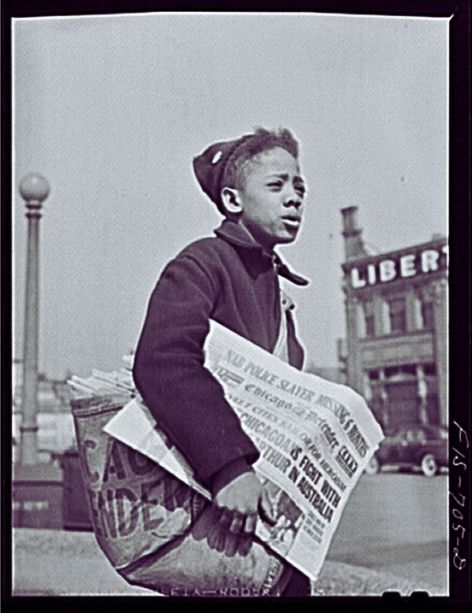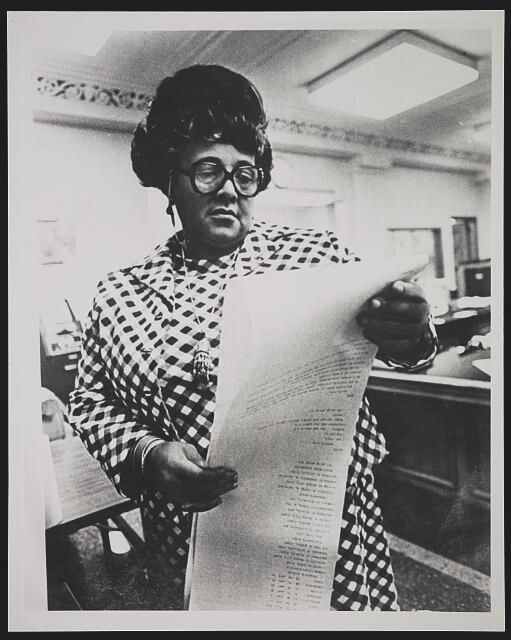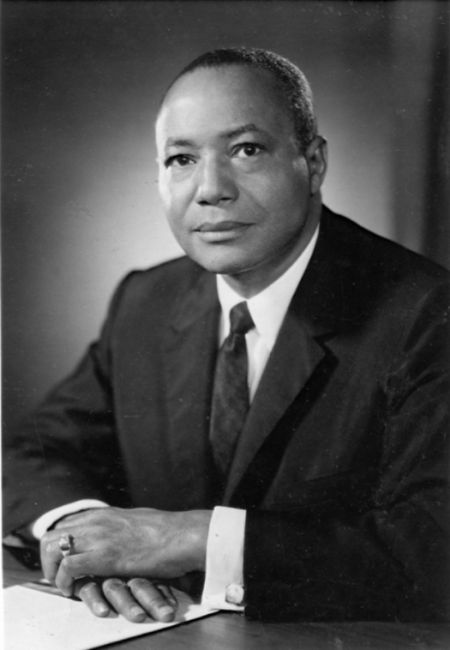A Chicago Defender typesetter, Chicago Defender Founder Robert Sengstacke Abbott and legendary Defender Journalist Ethel Payne (Public Domain, Library of Congress).
Today, May 5, is the 120th birthday of The Chicago Defender, the newspaper which played a significant role in transforming Black America.
And it all began with 25 cents, a kitchen table, and an idea.
Robert S. Abbott started The Chicago Defender on May 5, 1905, with little but determination and grit. From the small kitchen in his land-lord’s flat, Abbott produced four pages of clippings and local copy in the form of a four-page broadsheet. The initial print run was 300 copies.
It didn’t remain small for very long.
By the start of World War I, The Defender had grown to be the nation’s leading Black weekly, with the largest number of its readers residing beyond Chicago. Smuggled into the South across the Mason-Dixon line by entertainers and Pullman Porters who were black, the newspaper was passed from one hand into the next, read aloud in the barbershops and the churches of the South. It attained as many as 500,000 weekly readers at the height of its success — an amazing accomplishment since the newspaper started in humble circumstances.

Newsboy selling The Chicago Defender (Public Domain.
It was the first predominantly Black newspaper to reach circulation of more than 100,000 and the first to include a health column and a whole page of comic strips.
Abbott’s article provided African Americans with something that they lacked in the mainstream media: an unflinching voice, but above all else, an advocate.
The Defender stood firm against racial injustices through the utilization of newsworthy headlines, searing photos, and red ink to draw attention. Rather than the word “Negro” or the word “Black,” the newspaper called its readers proudly “the Race” and heralded “Race men and Race women.”
Abbott hired his first full-time staffer, J. Hockley Smiley, in 1910 to further build the paper’s national circulation. The Defender gained fame for spotlighting racial atrocities in America but still focusing on celebrating Black achievement.
At all times, The Defender became something greater than the newspaper itself.
In World War I, the newspaper took the lead in the Great Migration, calling on Southern black families to move to the North to find improved opportunities. It published employment advertisements, train timetables, and fiery editorials, going so far as to proclaim May 15, 1917, the beginning of the “Great Northern Drive.” The black population of Chicago grew nearly threefold between 1916 and 1918, driven in no small measure by The Defender’s appeal.
The reach of the paper extended far beyond the city of Chicago. Its report on the 1919 Red Summer Riots, its fight for anti-lynching bills, and its advocacy for integrated sport made it nationally influential. It featured such towering figures as Walter White, Langston Hughes, Gwendolyn Brooks and Ethel Payne.

Legendary Journalist Ethel L. Payne (Photo Credit: Library of Congress).
In 1940, Abbott’s heir and nephew, John H. Sengstacke, assumed responsibility. Under Sengstacke, The Defender not only carried on Abbott’s struggle for equality — it built on it. Sengstacke established the National Negro Publishers Association (now the NNPA), which consolidated the nation’s Black-owned newspapers. The Defender became a daily — The Chicago Daily Defender — the world’s largest Black-owned daily newspaper in 1956.
Sengstacke then established a newspaper chain, including adding The Pittsburgh Courier, The Michigan Chronicle of Detroit, and The Tri-State Defender of Memphis.

John H. Sengstacke
Even as the city itself transformed around it, The Chicago Defender remained rooted within Bronzeville, the vibrant South Side community it occupied. From its Indiana and 34th street office, it documented the ascension of Black Chicago — its jazz artists, politicians, and literary luminaries.
The article didn’t merely record history; it actually made it.
It served as a reliable guide to Black families as they negotiated the dangerous terrain of Jim Crow America. It held out the promise of hope, direction, and belonging.
Today, the legacy of The Chicago Defender — “The World’s Greatest Weekly” — is very much alive, existing in digital incarnation as a multi-media news site that has managed to persevere in a volatile media environment.
It is an example of the influence of a free media, the resilience of the people, and the persistent truth that sometimes the smallest beginnings can alter the course of the world.



